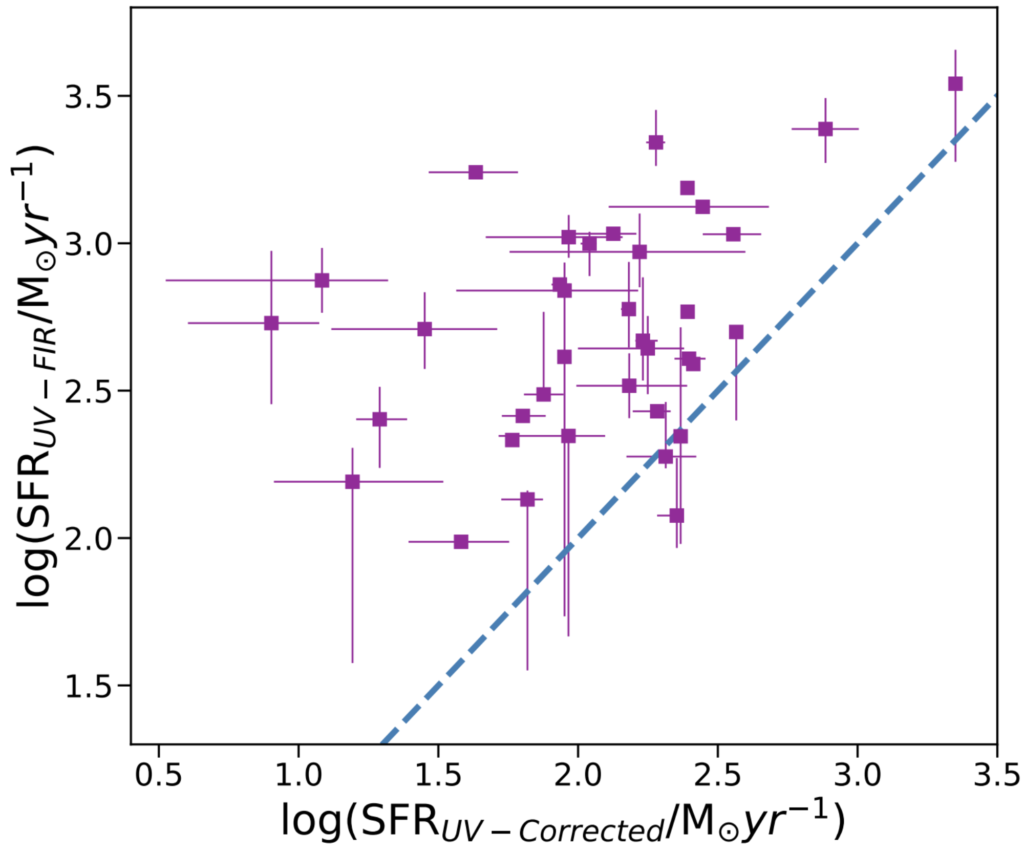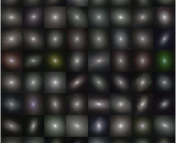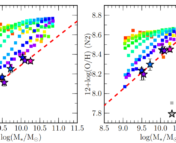Title: The Star Formation Rate of Massive Dusty Galaxies at Early Cosmic Times
Authors: Zacharias E. Escalante, Shardha Jogee, and Sydney Sherman
First Author’s Institution: The University of Texas at Austin
Status: Published in ASPCS, open access on ArXiv
The results of the first extragalactic surveys undertaken in the submillimeter wavelength regime in the early 2000s were dramatic and astonishing. Images acquired from staring blindly at the sky with the James Clerk Maxwell Telescope demonstrated that there exists a population of galaxies that shine with phenomenal luminosity at these long wavelengths.
After much debate, it was hypothesized that the reason for these “submillimeter galaxies” is massive reservoirs of dust. Generally, infrared emission is due to absorption and re-emission of light from star-formation. The amount of dust seen in these galaxies implies star-formation rates in excess of 1000 M*/yr! Their extreme dust emission even allows us to detect submillimeter galaxies in the early universe.
Fast-forward to 2020. Multitudes of focused observations of these submillimeter galaxies in other wavelength regimes (x-ray, ultraviolet, optical, and near-infrared) have bolstered our standing hypothesis of a population of dust-obscured, infrared-bright, and extremely star-forming galaxies. We have dubbed them “Dusty Star-Forming Galaxies”, or DSFGs. However, their existence continues to challenge traditional galaxy formation models and the cause of their immense dust content is unknown. Despite these open questions, they provide a valuable lens through which we can study the first two billion years of the universe.
Today’s Astrobite proposes that like viewing a fireworks display through the smoke, we might be missing some of the action.
Current galaxy surveys are primarily composed of ultraviolet and optical observations. These wavelengths are easily accessible from the ground and probed with some of the largest telescopes ever constructed with excellent angular resolution. Infrared and submillimeter light, however, suffer from a phenomenon known as confusion, which arises from poor angular resolution “blending” galaxies together. The result is that a galaxy seen in the infrared may correspond to several galaxies seen in the optical.

This SED-fitting procedure was carried out in two ways. Firstly, they include only the observations which are typically included in galaxy surveys: ultraviolet through the infrared. Secondly, they fit the entire observational dataset including the FIR and submillimeter. The results for one galaxy is shown in Figure 1.
They then recover the star-formation rates corresponding to the best-fit templates.
For the first fitting method with the limited dataset, the SED is corrected for dust based on how much of the UV emission has been attenuated away. However, this correction is highly uncertain since without the far-infrared data the amount of dust is unconstrained. Hence, the SFR for this UV-corrected measurement is also uncertain.
For the second fitting, the amount of dust and the UV attenuation are both well-constrained by the measurements: the missing UV flux and the increased far-infrared flux. This enables a direct constraint on the SFR from both the UV emission and then UV absorption and FIR re-emission by dust.

Comparing these two methods reveals a concerning disagreement. As shown in Figure 2, the inclusion of infrared and submillimeter data results in estimates of 3.5 times more dust on average, and by more than an order of magnitude in 7 cases!
This study demonstrates that galaxy studies without infrared and submillimeter data may underestimate the star-formation furor of these cosmic fireworks. High confidence estimates of star-formation rates are crucial if we are to understand how the stellar mass in the universe was built up over time. Significant advancements will be enabled by the next-generation of far-infrared and submillimeter facilities (e.g. Origins, ELT), which will be better equipped to observe with higher angular resolution and greater survey speed.




